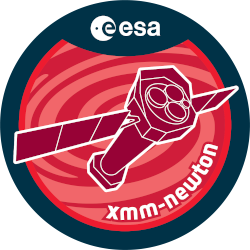

| Proposal ID | 060012 |
| Title | Triggered Observations of a LAT Monitored Blazar in Quiescence |
| Download Data Associated to the proposal | https://nxsa.esac.esa.int/nxsa-sl/servlet/data-action-aio?obsno=0600121401 |
| DOI | https://doi.org/10.5270/esa-jma612s |
| Principal Investigator, PI | Prof Markus Boettcher |
| Abstract | Most multiwavelength campaigns on blazars are triggered by a flaring state.Because of this strategy and the difficulty of measuring spectra and variabilityof blazars in low states, the quiescent states of blazars are poorly understood.XMM-Newton, in combination with Fermi-LAT, now offers the opportunity to do suchstudies. For this reason, we propose triggered observations of a blazar on thelist of Fermi-LAT Monitored Blazars in quiescence, which we define as aFermi-LAT detected flux above 100 MeV smaller than the lowest flux or upperlimit ever measured by EGRET, for at least one week. 80 ksec of XMM-Newtonexposure will be coordinated with intensive monitoring by the WEBT to obtainsimultaneous radio through gamma-ray coverage. |
| Publications |
|
| Instrument | EMOS1, EMOS2, EPN, OM, RGS1, RGS2 |
| Temporal Coverage | 2009-09-08T06:10:15Z/2009-09-14T14:07:16Z |
| Version | 17.56_20190403_1200 |
| Mission Description | The European Space Agencys (ESA) X-ray Multi-Mirror Mission (XMM-Newton) was launched by an Ariane 504 on December 10th 1999. XMM-Newton is ESAs second cornerstone of the Horizon 2000 Science Programme. It carries 3 high throughput X-ray telescopes with an unprecedented effective area, and an optical monitor, the first flown on a X-ray observatory. The large collecting area and ability to make long uninterrupted exposures provide highly sensitive observations. Since Earths atmosphere blocks out all X-rays, only a telescope in space can detect and study celestial X-ray sources. The XMM-Newton mission is helping scientists to solve a number of cosmic mysteries, ranging from the enigmatic black holes to the origins of the Universe itself. Observing time on XMM-Newton is being made available to the scientific community, applying for observational periods on a competitive basis. |
| Creator Contact | https://www.cosmos.esa.int/web/xmm-newton/xmm-newton-helpdesk |
| Date Published | 2010-11-17T00:00:00Z |
| Last Update | 2025-08-04 |
| Keywords | "XMM", "XMM-Newton", "lat monitored blazar", "multiwavelength campaigns", "lowest flux", "xmm newton exposure", "xmm newton", "fermi lat", "upper limit", "gamma ray coverage" |
| Publisher And Registrant | European Space Agency |
| Credit Guidelines | European Space Agency, Prof Markus Boettcher, 2010, 'Triggered Observations of a LAT Monitored Blazar in Quiescence', 17.56_20190403_1200, European Space Agency, https://doi.org/10.5270/esa-jma612s |